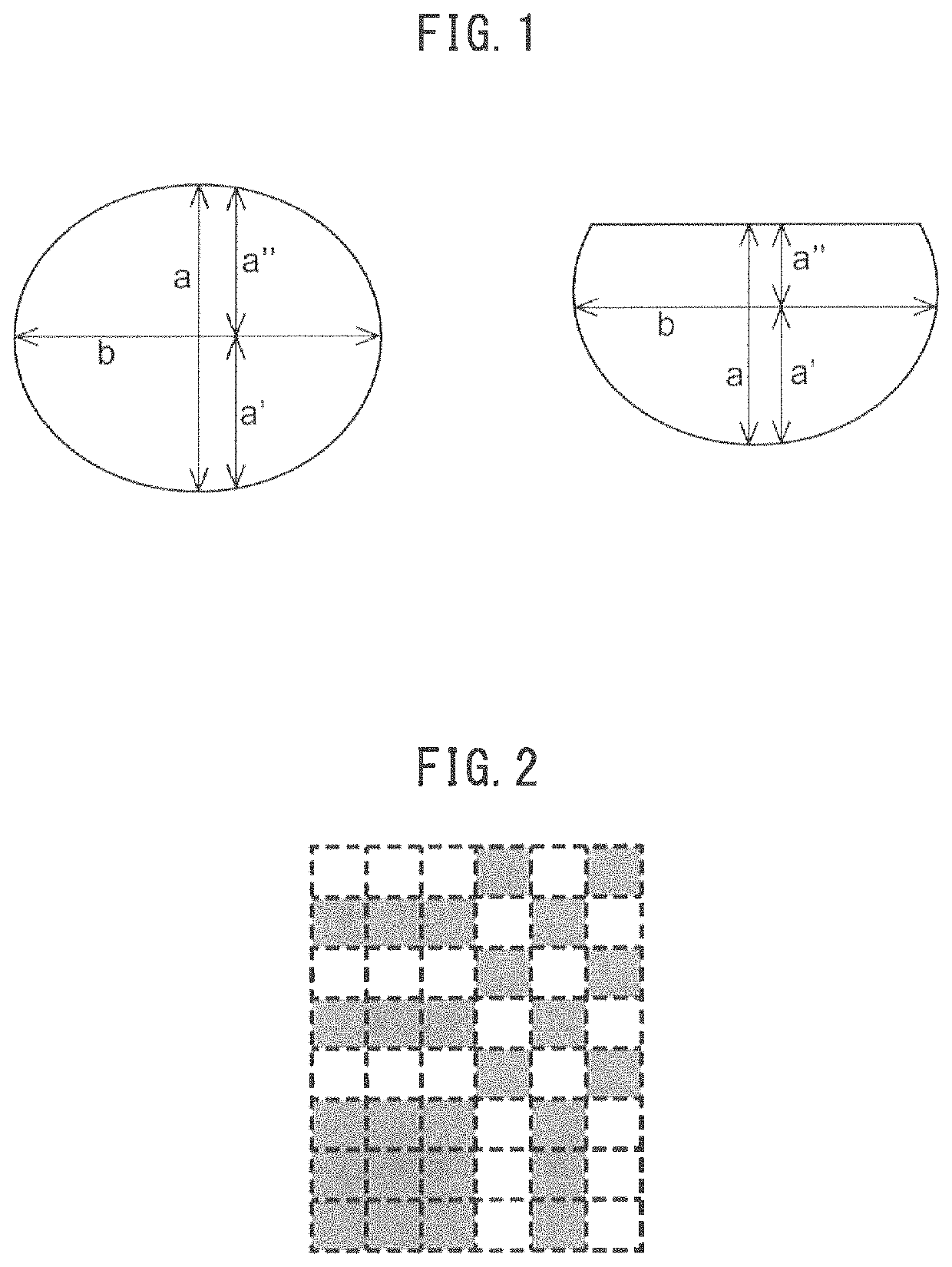Thin woven fabric having superior comfort
a woven fabric and comfort technology, applied in the field of thin woven fabrics, can solve the problems of inability to say that the fabric is extremely thin, cannot be said to be a fabric that is extremely thin, and retains heat, and achieves superior down-proofing properties, superior comfort, and superior tear strength and abrasion strength
- Summary
- Abstract
- Description
- Claims
- Application Information
AI Technical Summary
Benefits of technology
Problems solved by technology
Method used
Image
Examples
example 1
[0078]Using 22 dtex, 24 filaments Nylon 6 fibers for the warp yarns and 22 dtex, 24 filaments Nylon 6 fibers for the weft yarns, a fabric having the rip-stop taffeta structure shown in FIG. 2 was woven with a water jet loom. After scouring and presetting the resulting woven fabric in accordance with ordinary methods, the fabric was dyed with a jet dyeing machine and dried, followed by coating with an emulsion consisting of 1% modified silicone resin in the form of Nicca Silicon DM-100E (Nicca Chemical Co., Ltd.) and 0.5% anionic surfactant according to the DIP and NIP method and then drying at 140° C. The coated amount of silicone resin was 0.8% by weight. Subsequently, hot calendaring processing was carried out twice while setting the temperature of the calendar on the surfaces of the metal / plastic rolls to 150° C., the calendaring pressure to 27 t / 150 cm of width and the calendaring speed to 10 m / min.
[0079]The properties of the resulting woven fabric are shown in the following Tab...
example 2
[0080]A fabric having a taffeta structure was woven with a water jet loom using 22 dtex, 24 filament Nylon 6 fibers for the warp yarns and 33 dtex, 26 filament Nylon 6 fibers for the weft yarns, followed by carrying out weaving and processing in the same manner as Example 1.
[0081]However, hot calendaring processing was carried out only once while setting the temperature of the calendar on the surfaces of the metal / plastic rolls to 145° C., the calendaring pressure to 27 t / 150 cm of width and the calendaring speed to 15 m / min.
[0082]The properties of the resulting woven fabric are shown in the following Table 1. The woven fabric exhibited little cold sensation when touched and had a soft texture.
example 3
[0083]A woven fabric having a rip-stop taffeta structure was woven in the same manner as Example 1 using 11 dtex, 8 filaments Nylon 66 fibers for the warp yarns and 17 dtex, 16 filaments Nylon 66 fibers for the weft yarns, followed by carrying out weaving and processing in the same manner as Example 1.
[0084]However, hot calendaring processing was carried out only once while setting the temperature of the calendar on the surfaces of the metal / plastic rolls to 150° C., the calendaring pressure to 27 t / 150 cm of width and the calendaring speed to 15 m / min.
[0085]The properties of the resulting woven fabric are shown in the following Table 1. The woven fabric exhibited little cold sensation when touched and had a soft texture.
PUM
| Property | Measurement | Unit |
|---|---|---|
| TM | aaaaa | aaaaa |
| TM | aaaaa | aaaaa |
| TM | aaaaa | aaaaa |
Abstract
Description
Claims
Application Information
 Login to View More
Login to View More - R&D
- Intellectual Property
- Life Sciences
- Materials
- Tech Scout
- Unparalleled Data Quality
- Higher Quality Content
- 60% Fewer Hallucinations
Browse by: Latest US Patents, China's latest patents, Technical Efficacy Thesaurus, Application Domain, Technology Topic, Popular Technical Reports.
© 2025 PatSnap. All rights reserved.Legal|Privacy policy|Modern Slavery Act Transparency Statement|Sitemap|About US| Contact US: help@patsnap.com

